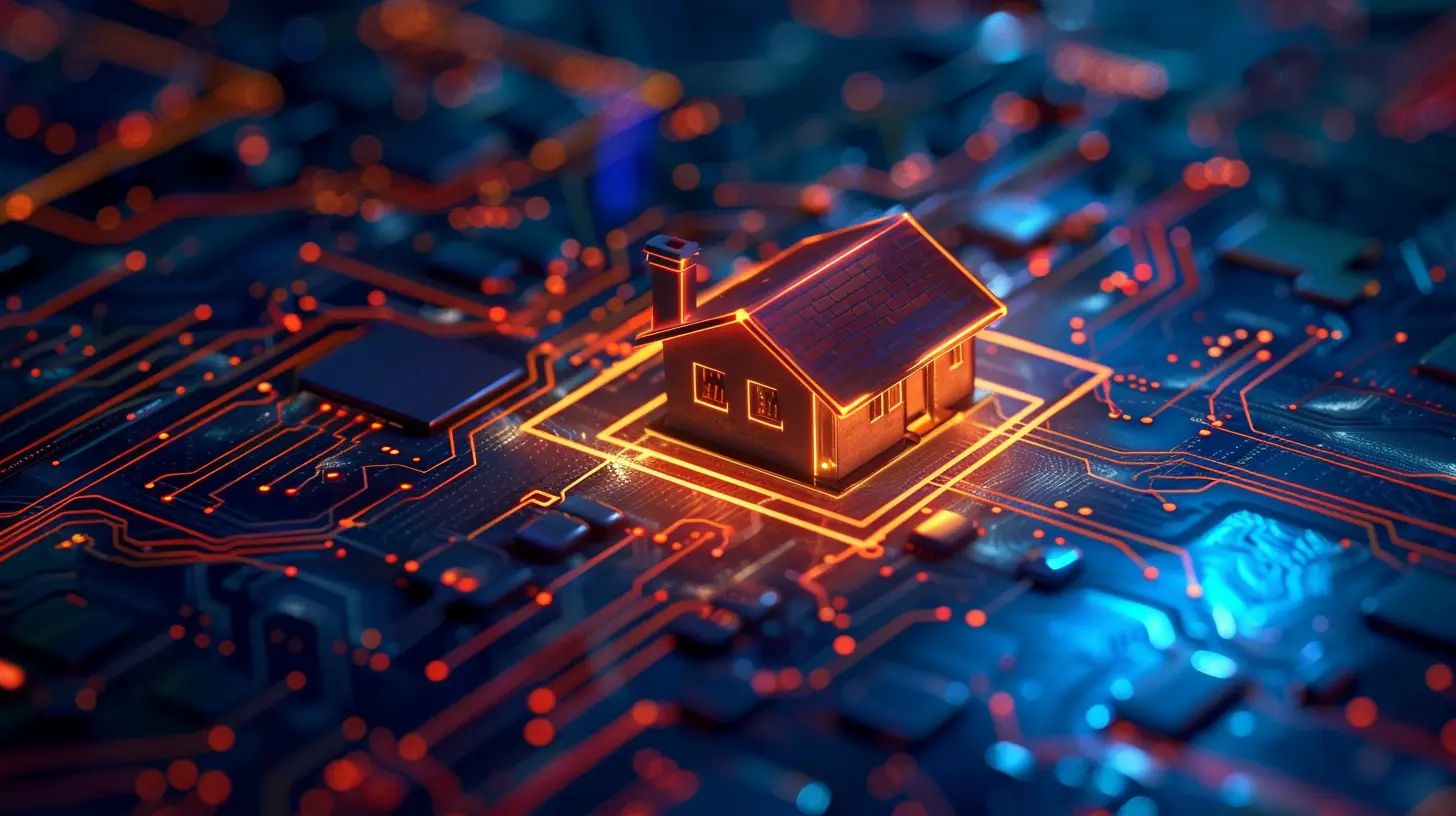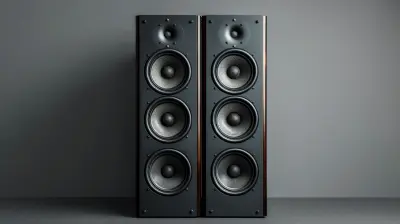How to Make Your Home More Accessible with Smart Technology
21 August 2025
Hey there! Ready to turn your living space into a smarter, friendlier, and more inclusive home? Whether you’re looking out for aging parents, living with a disability, or simply love the idea of a tech-savvy home that works for everyone—this guide is going to walk you through exactly how to do just that.
No complicated tech jargon, no overwhelming product lists—just straight-up, real-world advice on how smart tech can make life easier, more comfortable, and way more enjoyable for everybody under your roof. So grab your favorite drink and settle in, because we’re about to smarten up your space in the best way possible.
Why Accessibility Matters (More Than Ever)
Let’s face it—our homes should make life easier, not harder. But for people with mobility challenges, vision impairments, or cognitive limitations, basic tasks can become real roadblocks.That’s where smart technology swoops in like a superhero in Wi-Fi-powered armor. It breaks down barriers, replaces struggle with simplicity, and adds a huge dose of independence to everyday living. Think of it as putting your home on “easy mode.”
What Is Smart Home Technology, Anyway?
If you’re picturing a futuristic robot butler serving coffee—well, that’s not too far off. But in everyday terms, smart home technology includes devices and systems that you can control using apps, voice commands, or automation.We’re talking about things like:
- Smart lights that turn on with your voice
- Thermostats that adjust themselves
- Doorbells that show you who’s outside—without you getting up
- And even kitchen appliances that practically cook dinner for you!
These aren’t just fancy gadgets—they’re tools that make homes safer, more convenient, and way more accessible.
Who Benefits From a Smart Accessible Home?
Lots of people, honestly! But here are a few examples:- Seniors aging in place can live more independently.
- People with limited mobility can control the home without needing to move around much.
- Individuals with visual impairments can rely on voice or audio feedback instead of screens.
- People with memory-related conditions can use automation to stay on track.
- And hey—busy parents and multitaskers love the convenience, too!
So, while accessibility is the big win here, the perks spread far and wide.
Key Areas to Make Your Home Smarter and More Accessible
Let’s break things down room-by-room, feature-by-feature. You don’t need to overhaul your whole house overnight—just start with what matters most to you.1. Entryways That Welcome Everyone
The front door is the gateway to comfort—or frustration. With smart technology, it leans hard into the former.🏡 Must-Have Features:
- Smart locks let you unlock the door with your phone or a voice command (great for people with limited dexterity).- Video doorbells (like Ring or Google Nest Doorbell) allow you to see and speak to visitors from your phone or smart speaker.
- Automated door openers can swing open doors hands-free—pure magic for wheelchair users.
Just imagine never fumbling for keys again. That’s the power of smart access.
2. Lighting That Adjusts to Your Needs
Bad lighting can be more than annoying—it can be dangerous. But smart lighting? It’s a total game-changer.🔆 Why It’s Awesome:
- Voice-controlled lights (via Alexa, Google Assistant, etc.) mean no more reaching for switches.- Motion-activated lights automatically light up hallways, stairs, or bathrooms for better safety.
- Adjustable brightness and color can help people with sensory sensitivities or visual impairments.
And here’s the best part: you can group lights by room, dim them, or set schedules—all from your trusty smartphone.
3. Climate Control Made Effortless
Ever feel like your thermostat is mocking you? One minute it’s too hot, the next you’re shivering. Smart thermostats, like Nest or Ecobee, take the guesswork out of comfort.❄️ Key Benefits:
- Remote temperature control via app or voice.- Learned habits—these devices learn your routine and adjust accordingly.
- Integration with other devices so it can warm up the house before you even get home.
It’s like having someone who knows exactly how you like your home—without having to say a word.
4. Smart Assistants that Lend a Hand (or Voice)
Think of smart home assistants (like Amazon Echo or Google Nest Hub) as your home’s brain—and your voice is the remote.🗣️ Life-Changing Uses:
- Set reminders for medication, appointments, or daily tasks.- Control other smart devices just by asking.
- Get instant information like weather, news, or recipes—no need to grab your phone or a magnifying glass.
Bonus: They can even tell jokes. (Dad jokes included. You’ve been warned!)
5. Entertainment That’s Instantly Accessible
Ever tried fiddling with tiny remotes or complicated menu systems on the TV? Yikes.With smart home tech, you can simplify everything from music to movies—and never lose the remote again.
📺 Cool Features:
- Voice-controlled TV and streaming (“Hey Google, play The Office on Netflix.” Boom. Done.)- Smart speakers for music without wires, buttons, or confusion.
- Subtitles and screen readers for those with hearing or visual impairments.
Entertainment should be relaxing—not require a how-to guide, right?
6. Kitchen Tools That Keep It Simple
The kitchen can be a tricky place, especially for folks with mobility or vision challenges. But smart gadgets can make it safer and more enjoyable.🍳 Game-Changers:
- Smart ovens and microwaves you can control with your phone.- Induction cooktops with automatic shut-off for extra safety.
- Smart scales and talking measuring cups for accessible cooking.
It’s kind of like having a virtual sous-chef who always follows directions and never judges your cooking skills.
7. Bathrooms That Mean Business
Bathrooms are one of the most accident-prone areas in any home. Luckily, smart tech can help keep things safe and stress-free.🚽 Look For:
- Smart mirrors with built-in lighting and weather updates.- Motion-activated faucets that are hands-free and hygienic.
- Automated night lights for safer nighttime visits.
While you're at it, consider voice-activated showers. Yes, that's a thing. And yes, it's as cool as it sounds.
Combining Accessibility with Automation
Here's where the magic kicks into high gear—automating your smart devices to work in harmony.Imagine this:
- You say “Goodnight,” and your home:
- Locks the doors
- Lowers the thermostat
- Turns off all the lights (except a soft hallway glow)
- Starts your white noise machine
It’s like your house tucks you in at night.
Or say you're coming home with full hands—your door unlocks, lights turn on, and your favorite playlist starts serenading you. Now that’s a warm welcome.
It’s About Freedom, Not Just Convenience
At its core, making your home more accessible with smart technology isn’t just about cool gadgets—it’s about reclaiming freedom, comfort, and peace of mind. It’s about giving everyone in the home—regardless of age, ability, or lifestyle—the power to live the way they want.And honestly? That’s what tech should be about in the first place.
Getting Started Without Breaking the Bank
Worried that smart tech equals lots of dollar signs? Don’t be! You can start small and build over time.Here’s a simple startup path:
1. Pick voice assistant (Google Assistant, Alexa, etc.)
2. Add smart plugs or bulbs (low-cost, high reward)
3. Try a smart lock or thermostat
4. Slowly expand into other areas that matter most to you
You’ll be amazed at how quickly small changes add up to a big difference.
Final Thoughts: Smart Homes Are for Everybody
We’re living in an amazing time where the homes we live in can adapt to us—not the other way around. Whether you’re tech-savvy or just dipping your toes into the smart home pool, accessibility should be at the heart of every setup.When tech works for everyone, life gets a whole lot better—and that’s something worth smiling about.
So go ahead. Start small, dream big, and let technology open doors—literally and figuratively.
all images in this post were generated using AI tools
Category:
Smart HomeAuthor:

John Peterson
Discussion
rate this article
1 comments
Petra McKinney
This article beautifully highlights the power of smart technology in creating accessible homes. It's inspiring to see how these innovations can enhance independence and comfort for everyone. Thank you for sharing valuable insights that can truly make a difference in people's lives.
August 25, 2025 at 11:45 AM

John Peterson
Thank you for your kind words! I'm glad you found the insights valuable. Smart technology can indeed transform lives and create more inclusive spaces.


